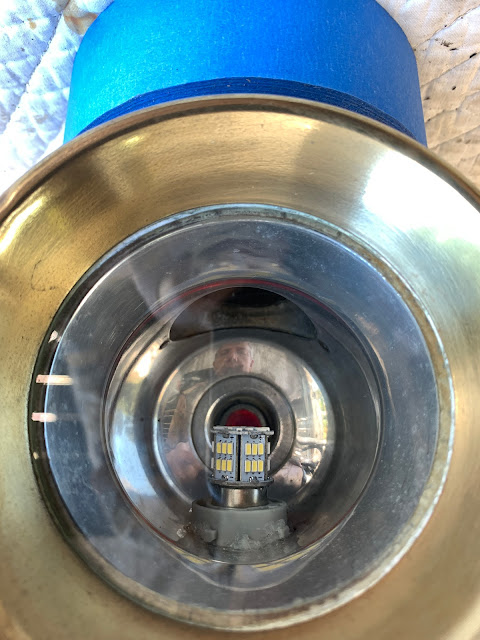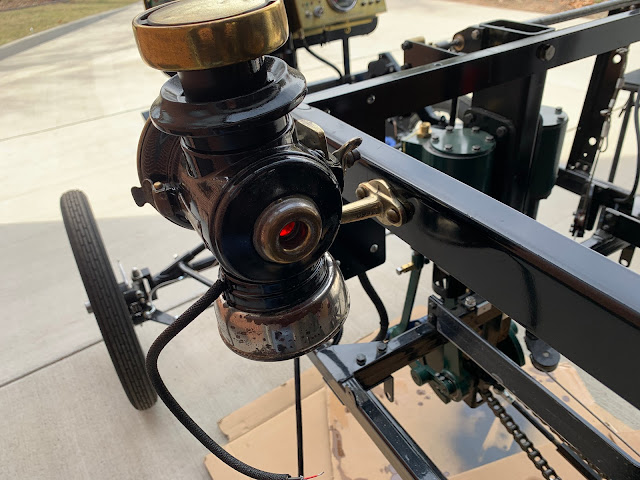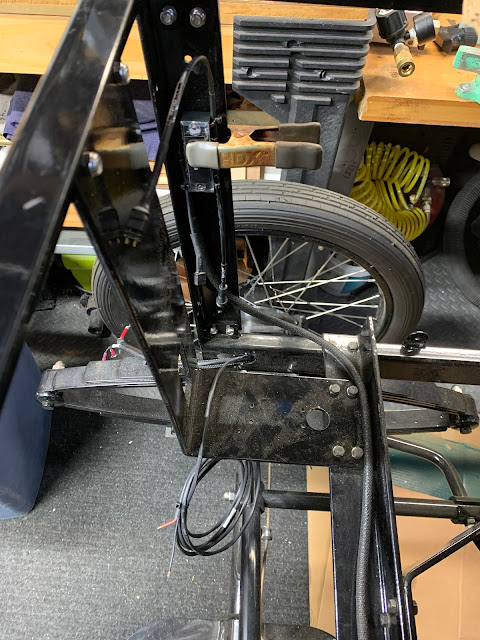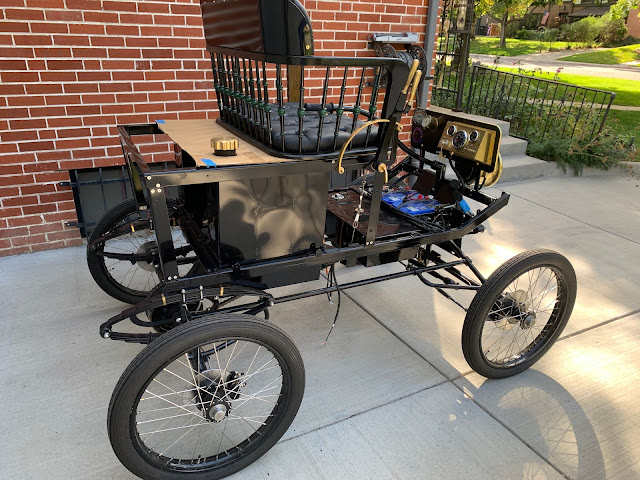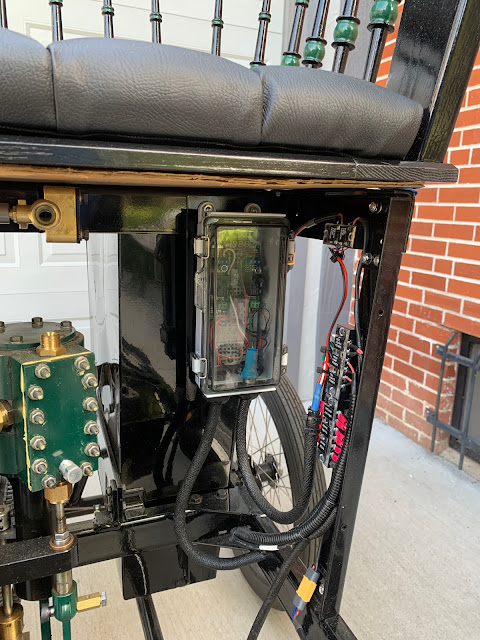I modify the STW Boiler Water Level Controls
STW provides a multi-stage method of controlling the boiler/burner. There is an infrared (IR) based sensor inserted in the back of the water reflex glass assembly that watches the water level. This is tethered to some low-voltage electronics. The basic operation of the electronics, as provided by STW, is to interrupt the power to the burner relay if the water level drops below the sensor. The system is in series with the Boiler Steam Pressure switch so either one will interrupt the power to the relay, and both must be ok in order to enable the relay.
This method allows for the cut-off of the boiler if it starts to run dry or exceeds the max pressure, but it does little to assist in keeping the boiler at a good working level.
The electronic components in the provided setup are simple; the IR sensor, a 5 volt power regulator, a small board to analyze the IR signal and turn it into a 5Volt High/Low trigger signal. This trigger signal goes into a relay control board. The board looks for a change from Low(0V) to High(5V) and visa versa.
The Reflex Glass and Sensor
My Modifications - Additions to the Controls
Looking at the provided controls, I immediately saw a couple of things that I wanted to modify. First was that I do not want to mount the control box to the side panel directly. When I get the side panels, I want to be able to remove them easily. So the electronics will get mounted to a plate that is attached to the frame.
When I tested the circuit, I also noticed that occasionally the relay would "flutter". This was caused by water droplets remaining on the sensor. (I dunked the sensor in a cup for testing.) My concern is that this flutter might confuse the burner. The power to the burner is actually directed to an inverter that powers the burner. So any flutter would go to the inverter, and then on to the burner. Now it may be that the inverter is robust enough that a rapid on/off will not cause any issues. Maybe it is smart and does not pass the high voltage unless it sees a stable 12V input. But I am betting that this may not be the case.
So I started looking at how to "De-Bounce" the flutter caused by the relay being powered on/off rapidly. At the same time I decided to look into a way to control the "Feedwater Bypass". There is a manual valve controlled by a lever next to the Parking Brake and Reversing Gear Control. The driver can turn the lever and close the valve. This will force the water from the pumps against the check-valve at the boiler and refill the boiler. If I put an "automatic" valve downstream of the manual one, I could use the water level sensor to determine when to close the valve.
There is an available contact on the STW Relay board that will work opposite of the burner output. When the burner goes off due to water level change, this output can provide 12V to the valve, closing it. When the water level increases, then the relay will re-trigger the burner output and the valve will loose it's power supply which will open it.
Seems like a win-win but there is a catch. Doing the solution this way, would cycle the process right at the minimum water level. The boiler will run more efficiently with water higher up. So how to continue to pump after the boiler re-fires? The answer is to move the valve controls to a circuit that can be triggered by the water level but then run for a set period of time. Assuming you are driving around, this would continue to allow the pumps to fill the boiler. Testing will allow for the determination of the timing for the fill period.
To do this I found a "Re-Triggerable Delay Timer" circuit board from www.mpja.com, one of my favorite places on the web. By using "COS" (Commercial Off Shelf" devices I know I will be able to replace any failed pieces, and those of you that are not comfortable with building circuits can replicate what I have done.
Obviously, paying attention to the water level while driving and manually controlling the bypass is the proper way to go, BUT having the pumps refill the boiler automatically if the level drops to the cutoff point is an additional backup to prevent scorching the boiler.
Here is a "tour" of the system.
And here is a demonstration of how it actually works.
Here is a schematic of this part of my electronic controls. The full schematic of the overall car is posted as a page on the right.
NOTE:
Today is April 20, I heard last night from Dean at STW with a further update on my remaining parts. From what I am seeing in the pictures, I am planning on receiving my next/last shipment (kits 15-24) in June.










